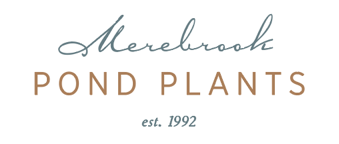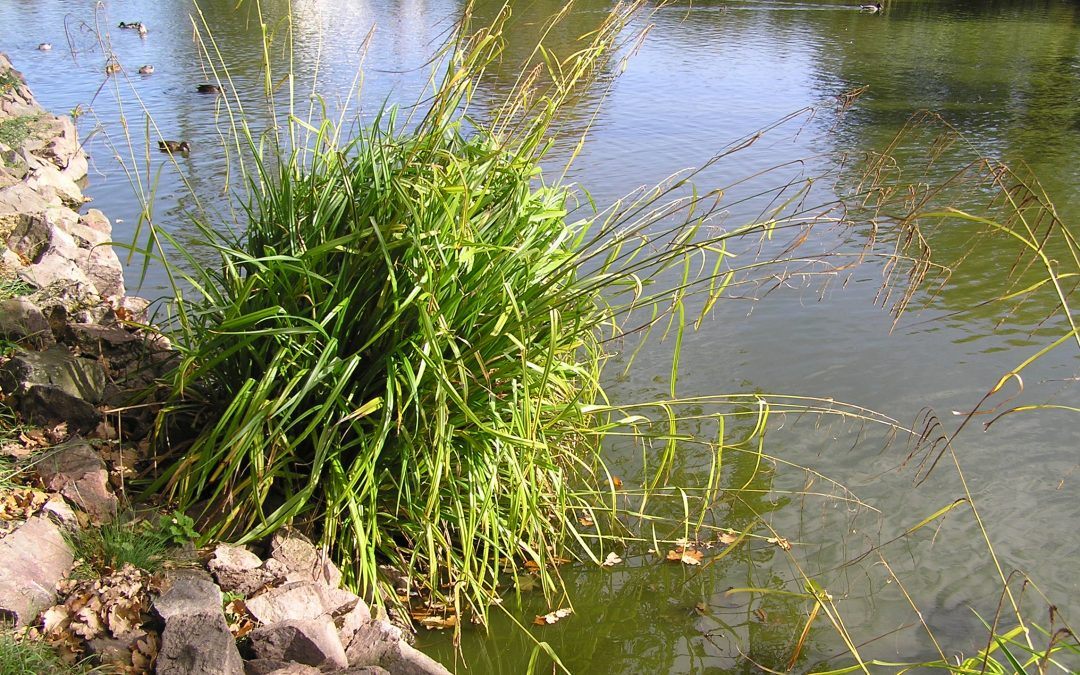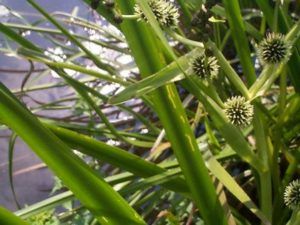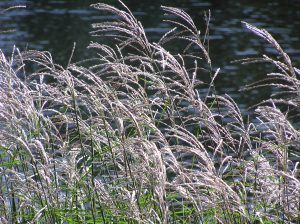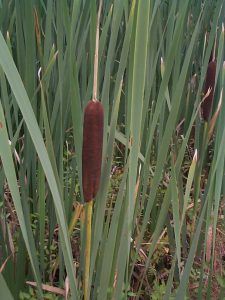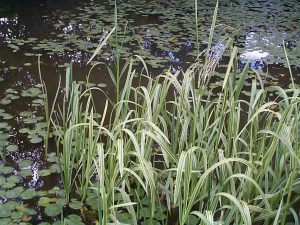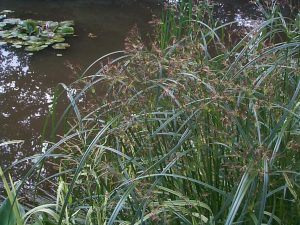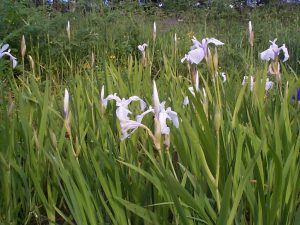Whatever kind and whatever size of pond you’re after, never, never ever introduce a layer soil of on top of the liner! If you put soil into a pond you get a huge blanket weed problem, the water will remain milky for ages, and whatever plants you plant in the pond, the biggest thug will take over, crowd out all the other plants and become a nightmare to control.
Blanket weed is always an issue with a new pond until a balance is achieved. Make sure to introduce sufficient planting with plants that are healthy and have space to grow.
If you are starting from scratch, do beg or buy half a bucket of silt from someone with a healthy, established pond. Once your pond is filled with water, tip in the sludge to seed the ecology with all kinds of helpful bacteria and mini beasts.
Create a healthy, balanced watery world
It is a common misconception that to encourage wildlife in your pond you must stick to native varieties of plant. Most of our native pond fauna are wonderfully adaptive and will make use of any of the plants you put in your pond. A range of plants including both native and non-native varieties will provide by far the best environment for wildlife.
First and foremost pond creatures are looking for a healthy, balanced watery world with plenty of cover from predators, plants that provide a safe place to lay their eggs, a plentiful range of food sources and, for the amphibians, edging plants that provide a secure exit route into the surrounding undergrowth.
You need to provide a good variety of plants at all levels in the pond. Oxygenating plants, deeper water plants, marginal, boggy and moisture loving plants combine to create both a healthy environment and food sources for all kinds of different critters. You also need both flowering and foliage plants to support a healthy range of insects.
Don’t forget that every ecosystem needs a top predator to help keep the balance of life in a pond. As long as you don’t feed them, a couple of goldfish will soon hoover up problem mosquito larvae, baby snails etc., and help to control algae.
Basic tips for planting
If you are making a brand new wildlife pond think about the location. All ponds flourish in full sun away from where trees can dump their leaves into the water. If you are using a liner, make sure that the pond is well above the winter water table or the next flood will create chaos by lifting the liner, emptying out the water and upsetting all the plants.
In a lined pool, always plant into planting baskets, with a single variety in each one, or the strongest plant will always prevail and crowd out the other plants. Planting into planting baskets makes it easier to maintain the balance in your pond. Planting baskets also provide shelter for wildlife in the water, protection from large predators such as cats, seagulls, crows and of course, the heron, and additional space for eggs and larvae to grow and develop.
Plant into large enough baskets to give room for growth. Plants will grow to fill the container and a good-sized clump always gives a better display, so the minimum size for most plants is a 5lt planting basket. For tall plants, you will need to plant into a 10lt planting basket or the plant will easily be blown over.
Take care when planning your wildlife pond to provide a variety of shelf depths to give the right depth for different planting baskets. A 5lt planting basket needs a minimum depth of 15cms and a 10lt planting basket needs a minimum depth of 20cms.
Choose your plants wisely
The problem with native plants is that they are perfectly adapted to our local growing conditions and will expand rapidly both through root growth and prolific seeding. Most garden ponds are small enough for a single variety to take over completely within just a few years. In most cases avoid typha latifolia (reedmace mistakenly often called bullrush), phragmites australis (Norfolk reed), sparganum ramosum (burr reed) and iris pseudacorus (common flag) altogether as they are all thugs. Their roots are strong enough to penetrate through the pond liner; they seed everywhere and will quickly overwhelm a garden pond.
Instead we would suggest using these as alternatives? They are much more manageable and your local wildlife won’t even know the difference.
Any wildlife pond that is comprehensively planted with a variety of flowering and foliage plants at all levels will provide a haven for wildlife. The important thing is to have a balanced and flourishing ecosystem providing food at all levels for a wide variety of creatures. If you provide food and shelter for them, the will come!
